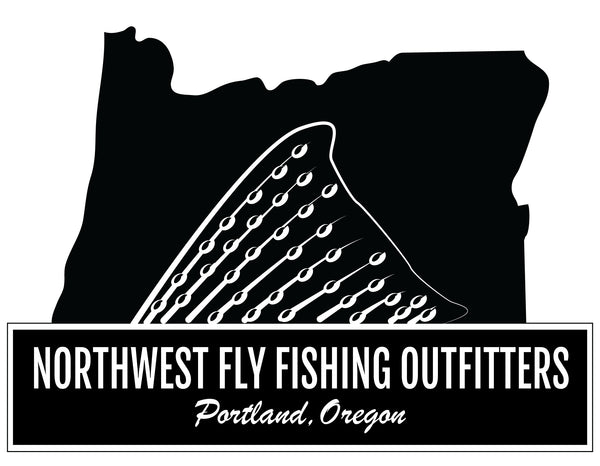Sage advice from one of the best steelhead guides in the area! When Eric is willing to share just a touch of his expertise, we should all listen! Whether you are looking for a guided trip, casting lessons (people do it for golf, why not us), or just the most knowledge you are going to find, this most recent blog will not let you down!

Well, it’s finally here, the Winter Season. If you grew up here or just moved into town recently you will quickly learn that if you want to get out and fish during the winter months your closest option would be our anadromous friends west of the Cascades. There is no shortage of beautiful places to chase these fish, from the Coastal area to nearby Washington, and of course our home waters like Hood, Sandy, and the Clackamas.
Today, I (Eric Leininger) am going to briefly touch on a few key elements to having success when the temps drop.

1: Watch The Weather Patterns.
This cannot be overstated, and I rarely hear people talk about it. It’s always, cover water, present your fly correctly, target holding water etc. Yes, these are all important factors, but I have seen many a client with far less experience/skill hook their fair share of fish when the water is high and dirty.
Why is this? Because when we get weather moving in and the rain starts to dump it does a few things. First off, and most obvious, is that it brings in fresh fish that have been waiting for the rivers to rise. Secondly, it warms the rivers, not by much but every degree counts. Anything above 41 degrees and I feel confident fish are going to be active. Thirdly, it puts color in the water, and this is the biggest factor for me. Steelhead become much more aggressive when they can’t see very far. They also feel more comfortable moving out of their holding spot, or place of cover, because essentially the whole river is cover during these times. And lastly, they’re gonna be close to shore. Real close. The less visibility and higher the water, the closer to shore they will be holding. These are the days when “Just the Tip” can get them. This is because there is less holding water. At extremely high levels, there may only be a few good holding spots in many miles of river. Find these places, and you will most likely find fish.

2: Cover Water. (As mentioned prior)
Targeting a fish that has no interest in eating, is sexually mature and ready to do its thing, and is essentially a saltwater species in very cold water is highly challenging. Getting them to chase down a ball of feathers, unscented and without any vibration, can sometimes be an exercise in futility. This is why covering water is also extremely important. I push back against the “take two steps” approach. It’s all about visibility. How far can you see into the water? That’s how far you should be moving between swings. Oh, you can see 20ft? You should be at home tying flies and using your time more wisely. In my opinion, I am looking for that fish that has a serious attitude problem, a fish that will move a few feet at the least to smash my offering, which is annoying the absolute crap out of them.
3: Don’t Cast Above Your Pay Grade.
This drives me nuts. I get it, but it still drives me up the wall. Casts that don’t turn over are not fishing. Re-read that sentence another 10 times, please, and thank you. You need to keep that in mind. You need to live by that. I can guarantee over the last 14 years of chasing these fish, I, as well as plenty of others, have worked a run well only to have a cast flop out there, followed by us trying to mend it out. That’s the cast where the fish was. That’s the swing they were looking for. And you and I just shit the bed. If you can only cast 50’, then fish it all day. I promise you will get more hookups. Quit trying to win the Spey-O-Rama. Consistency is key, and these fish love predictability. How do we know this? Ask any Guide who has watched their client work down a run towards a holding fish they can see. As that fly makes its way closer to that fish with each sequential presentation, that fish will start to get “fidgety.” Their tail may start to speed up a bit, or they may make small movements from left to right. This fish is becoming active, a player. I imagine this fish thinking, “If that f*@king thing comes 1 foot closer, I am going to absolutely detonate on it.” And if we keep everything tight and consistent like our previous swings, it happens.
I hope some of this info increases your odds out there this Winter. If you’d like to learn more or work on your overall skills, give me a shout at the shop (NWFFO), and let’s get you on the books. Good luck, ya’ll. Because no matter what anyone says, there is definitely a little involved in this sport.

Eric Leininger
Professional Guide
Cell: (503) 784-4623
Shop: (503) 252-1529
nwffo@flyshopnw.com

